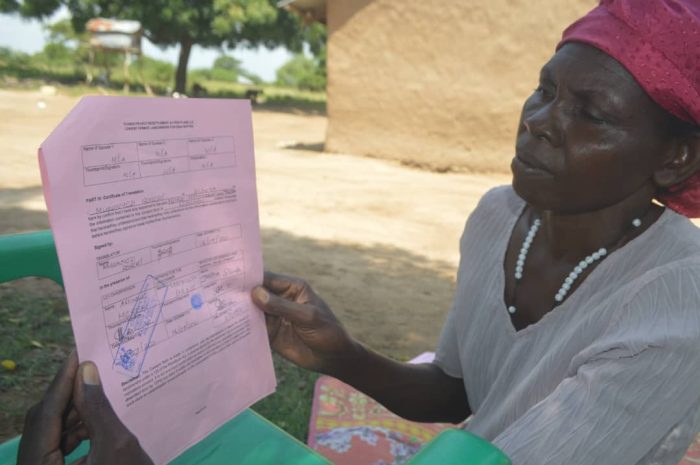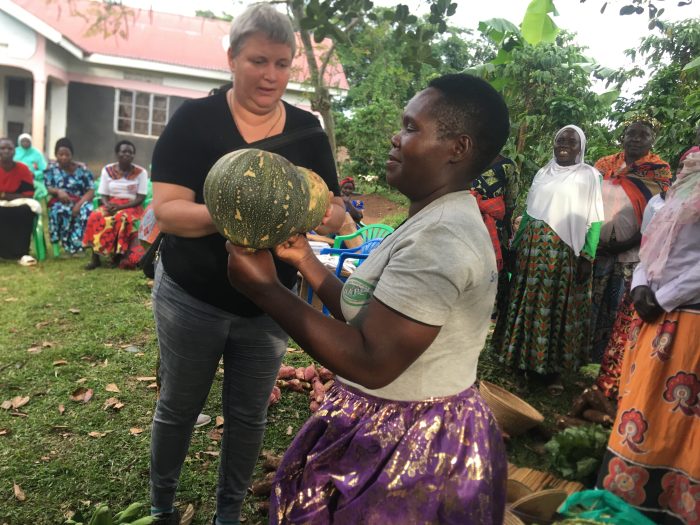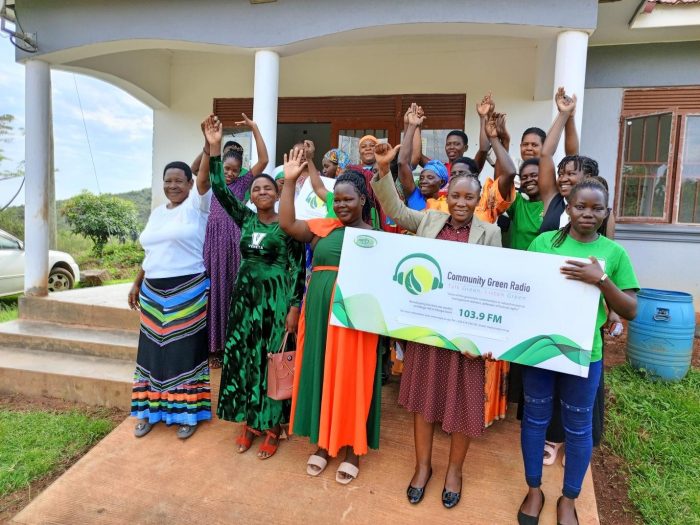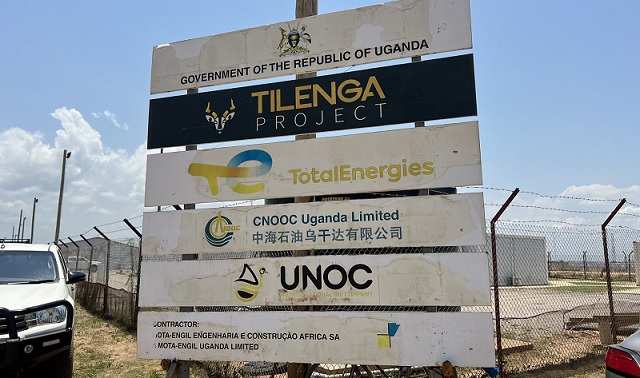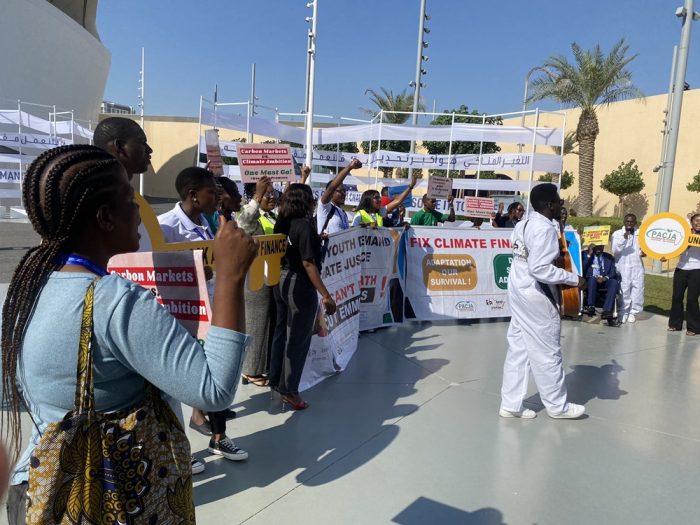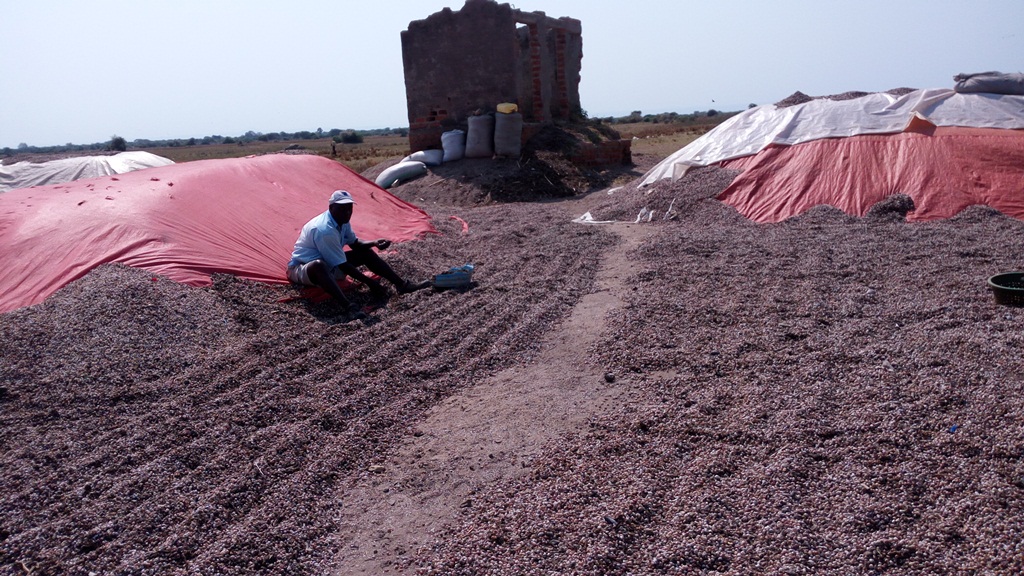
Simon Bidandi deals in snail shells and has lived at Titye- Kaaro landing site on the shores of Lake Albert in Bulisa district for over 23 years. All members of his family pick snail shells and silver fish from the Lake Albert waters and sell them to animal feed processors in Uganda, Rwanda and the Democratic Republic of Congo.
Bidandi dips a bucket into the water, lifts, observes and then slowly tips the water out and remains with shells. His wife, Irene Namaganda, stands 30 feet away near the tarpaulin spread on the beach to select and sun-dry the shells. She says 15 years ago, the point where she is standing was covered by water, but the shoreline has receded by about 100 meters.
Fishing was not all that hard, she says, adding that today, fishermen have resorted to catching silver fish and collecting snail shells because all the breeding grounds for bigger fish (papyrus swamps) have dried up and have been turned into cattle-grazing grounds.
The silver fish and snails, just smaller than a penny, are among the few living creatures that have survived under the harsh conditions in Lake Albert.
Environmentalists weigh in
A survey conducted by the National Association of Professional Environmentalists (NAPE) in Bunyoro sub-region early February 2017, discovered that over 11 rivers, their tributaries and three swamps that flow into Lake Albert had dried up completely with no sign that there was any water body where they existed.
The rivers include River Titye Kaaro, River Kamonkole, Sambye, Wampulungulu, Wambabya and River Mutyooma. Warukanga and Kigwera swamps near Murchison falls have also dried up.
Residents superstitious
The rivers and swamps were part of the sacred sites protected by the traditional lake custodians. The cultural custodians of these sites believe the rivers dried up because their spiritual powers were weakened as people ‘misbehaved’ near the sites.
According to local mythology, permitting women to access the lake without restriction has caused the problem.”Thirty years ago, women were not allowed at the landing site, except some chosen few like me; who were selected to perform rituals. Even I could not be accepted here when I was in my menstrual periods. The lake would swallow more than 10 people on a night, such a thing happened. But look now; there are women everywhere,’’ 52-year-old Margaret Kagole, a traditional female custodian of the lake in Bullisa district, says.
Wendi Kazimula, another custodian, explains: “One of the major tasks of a custodian is to visit the shrine embedded within that sacred natural site and ask the earth to forgive her people after, for example, crop fields are attacked by pests and or when there is a dry spell like it is today. We hold a traditional prayer near the lake so rain comes and rivers remain alive.
A crucial part of this ceremony is that we take seeds to ask for the multiplication of food into the coming season. We pour them in the water for the ancestors to receive and multiply them. But today, we do not even have the original indigenous seeds to perfectly perform these rituals.”
Cultural leaders in charge of performing rituals at the lake believe the surging populations at the landing sites have misbehaved, defied the traditional customs throwing the second biggest lake in Uganda into misery ’’We told new comers at the landing sites not to play sex near our potent sites but they defied our orders now the gods are unhappy and Lake Albert is slowly disappearing, killing fish and the eco-system stability. It’s an environmental mystery: A 2,000 square-mile Lake is dying, and no one bothers to avert the situation even when some elderly people know exactly why the lake is drying up ‘‘says 83 year Alone Kiiza, another custodian of Waloiza sacred natural site near Kasemene oil well in Bulisa district.
Custodians back off
The traditional custodians used to restrict communities from tampering with the ecosystem anyhow because it was considered ‘sacred’.
But with the industrialization, coupled with Uganda’s surging population, the custodians have been compromised and most of them backed off their roles.
Bulisa sub-county LC3 chairperson Isaac Nkuba says even the custodians who would be guarding these ecosystems lead questionable lives in terms of morality and thus can no longer command respect within the communities.
Joining hands
Environmentalists believe that as the livelihood and wellbeing of rural communities depends on the health of their ecosystems, the exercise and protection of human rights depends on the protection of the ecosystems of their ancestral lands, water bodies and other natural resources. Unfortunately it has not been the case with Lake Albert.
Denis Tabaro Natukunda, who heads the community ecological governance programme of the National Association of Professional Environmentalists (NAPE), says his organization is currently supporting the few remaining traditional custodians to protect the lake and its ecosystem.
Tabaro also attributes the lake’s deterioration to climate change, extensive farming, deforestation and activities of oil companies.
He underscores the importance of engaging and restoring the vital role of custodians on the lake, especially the women. According to Tabaro, NAPE, believes that engaging the locals, including the custodians can ensure that the lake is protected and restored.
Tabaro says the European Union is currently supporting efforts to restore Lake Albert and Edward to their original sizes.
Silver fish trade under threat
Like many other lakes that have been hit by the harsh climatic conditions, Lake Albert, located in the western arm of the East African Rift valley, has receded by 100 metres in some areas.
The fish catch, too, has dropped significantly, negatively affecting the livelihood of the surrounding communities. Some of the areas which used to be fish breeding grounds have been turned into grazing places.
Although scientists cite human activities and the effects of climate change as being responsible for the lake’s recession, natives living near the water body think it is the angry gods that are responsible for the situation.
The Fishermen say many aspects of the lake have been desecrated and people no longer perform rituals that used to make things right.
Background story: Climate change takes a toll on the water body.
Covering an area of 2,045 square miles, Lake Albert is the second largest lake in Uganda. It is located on the border of Uganda and the Democratic Republic of Congo. Apart from effects of climate change, the lake could face the threat of pollution from the oil drilling activities in the future.
What can be done?
The LC1 chairperson for Kigwera Southwest village in Bulisa sub-county, Fred Baguma, says plans are underway to plant broadleaved trees in the lake’s buffer zone that was initially protected by custodians before charcoal burners cut down the trees.
Environmentalists advise that for such a lake to survive, a buffer zone of 200 metres from the water’s edge must be left protected from any activity because it is also a breeding area for the aquatic organisms.
Other factors Nkuba says the lake has been degraded by the herdsmen who directly push in their ever surging herds of cattle to drink water and graze on the shores.
“I call on my colleagues in other sub-county councils near the lake both in Uganda and DRC to pass ordinances blocking this,” he pleads.
Hoima district environment officer, Joseline Nyangoma, supports NAPE’s campaign to strengthen the traditional governance systems that call for the conservation of ecosystems, saying the current environmental challenges in Uganda are the result of human activity.
The story was compiled by Robert Katemburura, Turyomurugyendao,
Editor NAPE Community Green Radio, Hoima District.

